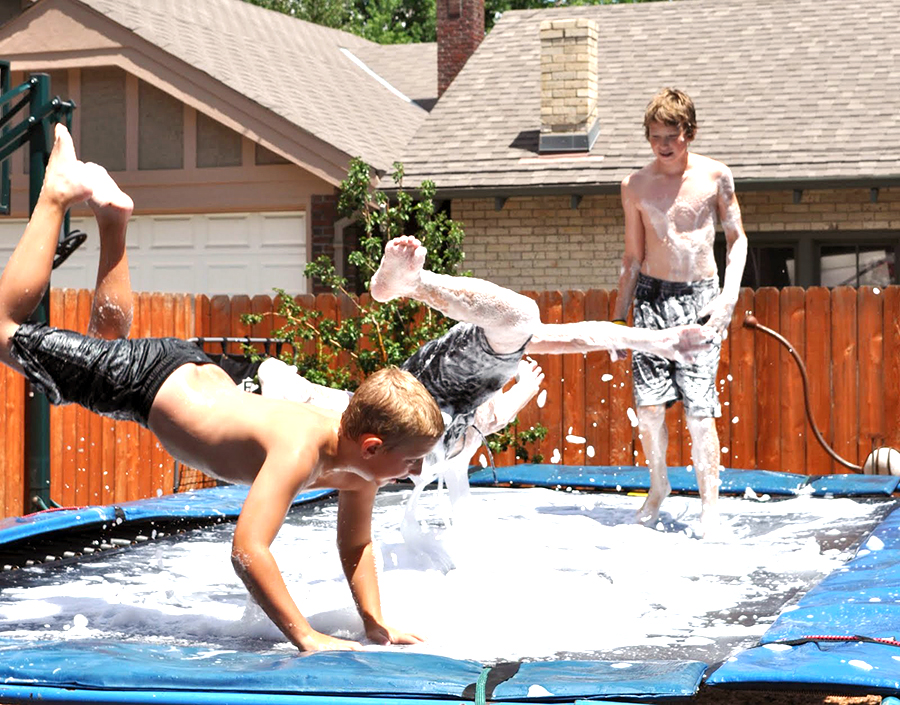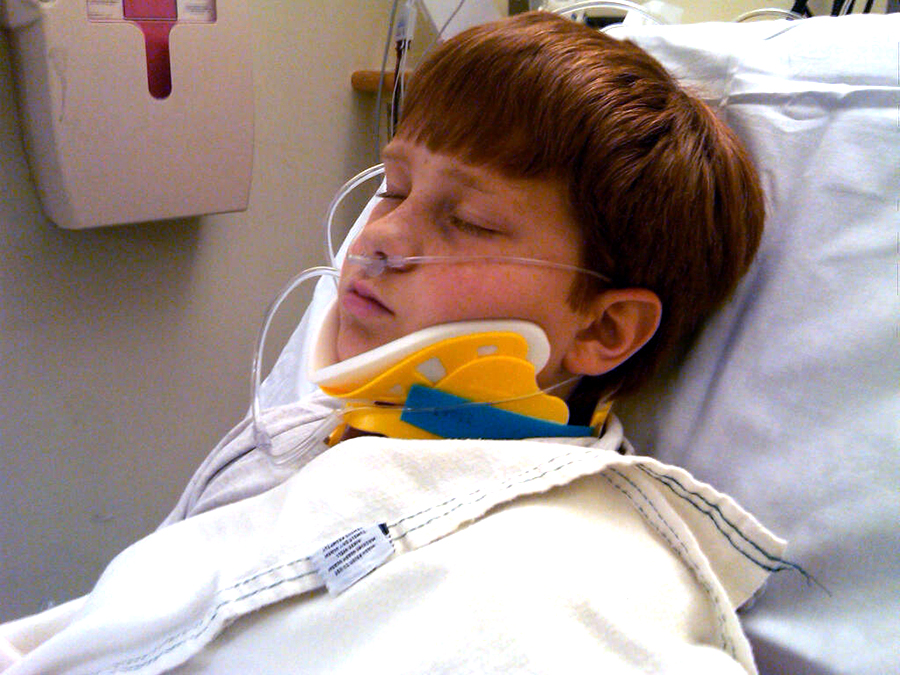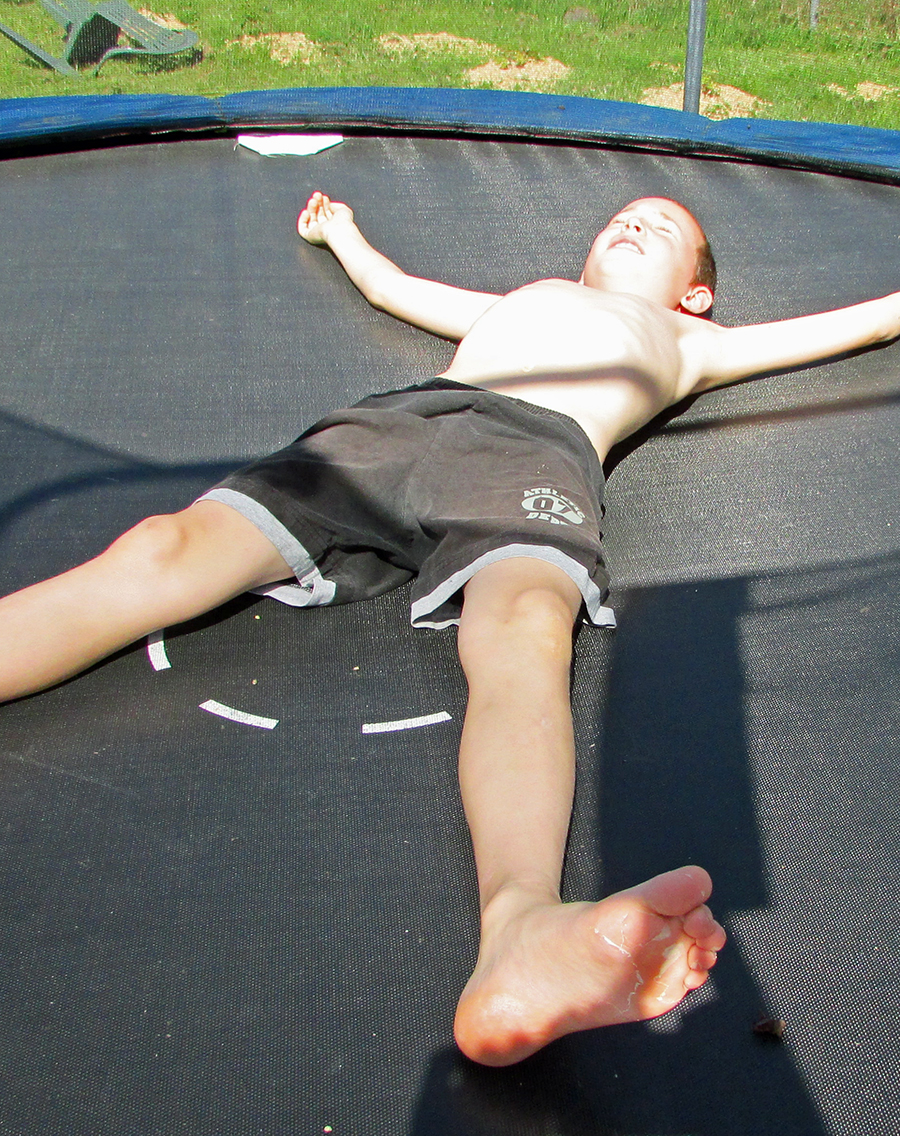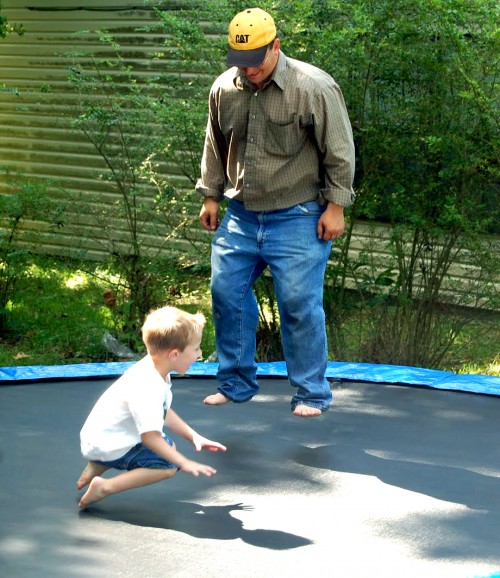AAP Reaffirms Position Against Trampoline Use
In case you were thinking that trampolines have gotten safe enough to warrant spending your hard earned cash on one for your kids – they haven’t… so don’t.
The American Academy of Pediatrics has again reviewed all the safety and childhood injury data and has reaffirmed it’s position against their recreational use by children.
Whoa! I know a lot of you already have one of these things in your yard; but give these guys a hearing. At least read on to find out what data they felt warranted such a strong position.
Susannah Briskin, MD, pediatrician and sports medicine specialist, wrote for the consensus panel stating that “Although trampoline injury rates have been decreasing since 2004, the potential for severe injury remains relatively high.”
We’ve known about injuries in, and had advisories for, participation of children in other activities such as swimming, bicycling and other playground equipment for a long time. And that’s sort of part of the problem with the issue of trampolines.
The dangers of children bouncing on trampolines doesn’t get anywhere near the “press time” that those other sports do – so a more direct stand needs to be publicized to increase parents awareness of the dangers trampolines pose to their kids.
Injury rates are 70 per 100,000 for 0 to 4-year-olds and up to 160 per 100,000 for 5 to 14 year-olds. That rate does show some similarity to the other activities but there are some substantial differences.
Extra Dangers of Trampoline Use
Because it becomes a piece of “furniture” in the back yard it becomes fairly blase’ in most parents bucket list of things to worry about. Parents who would place strict use and barriers for use of a swimming pool don’t think even “once” about their trampolines.
 All you have to do is watch through a window at a group of kids around a trampoline and the thing nearly hypnotizes more and more kids to climb aboard. Soon there are multiple kids all bouncing – unfortunately, whether they are supervised or not.
All you have to do is watch through a window at a group of kids around a trampoline and the thing nearly hypnotizes more and more kids to climb aboard. Soon there are multiple kids all bouncing – unfortunately, whether they are supervised or not.
Most injuries occur when there are multiple people using it at once; AND, it’s the smallest child who gets hurt the worse – up to 14 times more vulnerable to injury. It’s a law of physics and the smallest one doesn’t even stand a chance! And not just because their motor-skills are usually less developed.
Twenty-seven to thirty-nine percent of injuries are accounted for by falls onto the ground from the “tramp” and of course those are more frequent when it is on an uneven surface.
Still Not Convinced? Even More Dangers
You may be thinking that merely demanding that the kids always be supervised will keep them safe – well it won’t! Between 30 and 50 percent of children who are injured by a trampoline had their parent watch them do it! (or some other adult “supervisor.”)
 Almost 30% of trampoline injuries we see in the emergency room are in children six and younger. And, even though it’s mostly foot and ankle injuries, around 15% (10-17%) are to the head and neck. And I hope I don’t need to tell you – that’s bad!
Almost 30% of trampoline injuries we see in the emergency room are in children six and younger. And, even though it’s mostly foot and ankle injuries, around 15% (10-17%) are to the head and neck. And I hope I don’t need to tell you – that’s bad!
A full half of a percent (1 in 200) of all trampoline injuries resulted in “permanent neurologic damage!” That’s even worse.
And if you’re still thinking that “I’ll just add some padding or something” – well, that won’t work either. Unlike bike helmets or flotation vests, there is absolutely no padding or protective gear which has been tried and shown to prevent trampoline injuries.
Official Policy
That’s why the entire panel of pediatric advocates and sports specialists have made this, fairly unusual in its bluntness and scope, written policy. Basically, parents should not allow recreational trampoline usage by their children. Not in their back yard or at the trampoline park.
For the AAP, it’s a policy statement. Obviously, for parents it’s a recommendation – albeit from some very smart people with data.
 History has shown us that not all parents are quick “adopters” of advice; so, the policy also has a few “recommendations” contained in it as well.
History has shown us that not all parents are quick “adopters” of advice; so, the policy also has a few “recommendations” contained in it as well.
- Pediatricians should advise against recreational trampoline use.
- Homeowners should verify whether trampoline injuries are covered by their insurance policies.
- Any trampoline use should be restricted to a single user at a time.
- Adults familiar with safety guidelines should supervise any trampoline use.
- Trampoline conditions should be inspected regularly, and trampolines in disrepair should be discarded.
- These cautions should also be in effect for trampoline parks and structured trampoline programs as well.
A news release accompanying this latest re-affirmation stated: “Pediatricians need to actively discourage recreational trampoline use. Families need to know that many injuries occur on the mat itself, and current data do not appear to demonstrate that netting or padding significantly decrease the risk of injury.”
Just one thing I ask. If you’re deciding to get rid of the one you bought – please don’t sell it to anyone with children – they may be one of my patients.
[Pediatrics Sep 24, 2012]
Advertisement by Google
(sorry, only few pages have ads)

